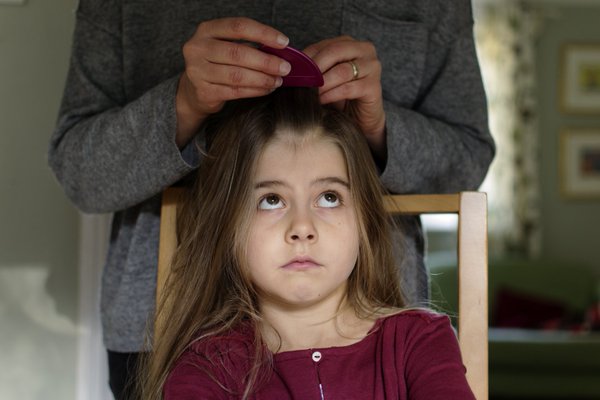
Lice eggs vs. dandruff? The difference between the two can be a tough call. How to differentiate between the two can be tricky for anyone.
When you take a gander at your kid’s head, you may peek at some white specks, something close to sesame seeds: but you just can’t figure out if it is nits, dandruff or hair debris?
If your kid or any family member is severely infested with head lice, then don’t panic. Head lice infestation is common and can occur at any age and to anyone.
The right approach is to learn and gather as much knowledge as you can to treat lice eggs and head lice infestation. The easiest way to tell the difference between lice eggs and dandruff is,
THE PRIMARY DISTINCTION BETWEEN HEAD LICE EGGS AND DANDRUFF IS THAT LICE EGGS ARE GLUED TO THE HAIR SHAFT WHILE DANDRUFF IS FOUND ON THE SCALP
Does it sound simple? No? Don’t worry; you will get to know few more sneaky tips to tell the difference between the two. So, continue reading for more interesting and easy ways to differentiate between lice eggs vs dandruff.
Lice Eggs Vs Dandruff- A Tough Call
It can be pretty difficult to identify the two. Reason being that both looks same at first glance. After reading this guide, it will become easy for you to identify lice eggs vs dandruff. Now let’s see what’s the deal breaker between the two?
1-How Can I Know If It Is Dandruff?
By closely observing the scalp you can easily find the difference. Dandruff appears to be white or yellowish flakes that may occur in patches. The worst form of dandruff can result in excessive white flakes accompanying red and irritated skin.
Dandruff is believed to be a skin condition known as skin eczema which is also referred to as Seborrheic dermatitis. Skin eczema results due to the excess production of oil and when it affects the scalp skin it seems whitish or yellowish colored flakes called dandruff.
2-Can I Identify Lice Eggs Or Nits?
The eggs laid by lice also varies from grey, white color to yellowish in color. Mostly, they are referred to as the size of sesame seeds. They are around 0.5 to 0.8-millimeter-long and can be up to 0.3 millimeters wide.
Initially, when a female louse lay an egg, it is of gray color, but it changes color till the egg hatches. Lice egg shells are very strong even harsh chemicals such as hair dye have been proven ineffective in treating lice eggs.
Nits are attached to the hair strands, unlike dandruff that is present on the scalp. It is fairly difficult to identify a nit as it tends to become hard to find minute egg shells.
The favorite spot of a louse to lay eggs is behind the ears and around the neck. Though head louse moves in the head and can lay egg all over the head.
So, in case of head lice infestation, don’t ignore any part of the head. It is mandatory to examine the whole head to get rid of lice infestation completely.
3-So What Is The Criteria To Identify?
– The primary distinction between head lice eggs and dandruff is that lice eggs are attached to the hair shaft; they are sturdily joined to the hair and are not easily removed.
– On the other hand, flakes of dandruff don’t get attach to the hair strands. They are present on the scalp and can be dust off easily by hands.
– Nits are sticky, tiny and usually, they are attached to the hair strands close to the scalp. This helps the nits to get the warmth from the scalp.
– While removing the nits, it seems that they are glued to the hair strand as nits don’t come off easily. They are cemented to the hair shaft and would not even remove with a blow.
– Dandruff, on the other hand, comes off the hair easily. It flakes off whenever you blow your hair. If white stuff dusts off from the head easily then it can’t be nits at all.
– Nits are symmetrical while dandruff appears to be asymmetrical.
– Some people believe that black people don’t get head lice or nits due to their curly hair structure. Read more about it here.
– Tea tree oil and olive oil are effective in treating lice eggs.
There are many home remedies to treat head lice infestation at home. It can take a couple of weeks to completely clear the head from lice eggs, nymphs and lice. A single treatment would not be enough. It should be taken care that the infected person should not share his personal
It should be taken care that the infected person should not share his personal belongings such as pillow, caps, scarves, etc. with others as head lice tend to travel through these objects.